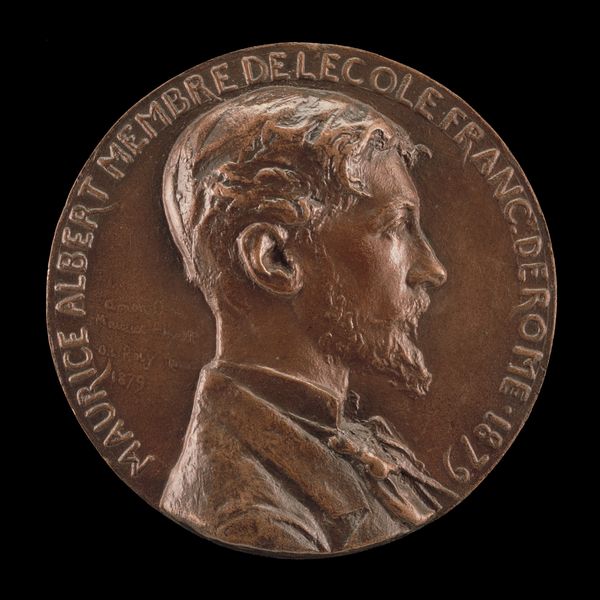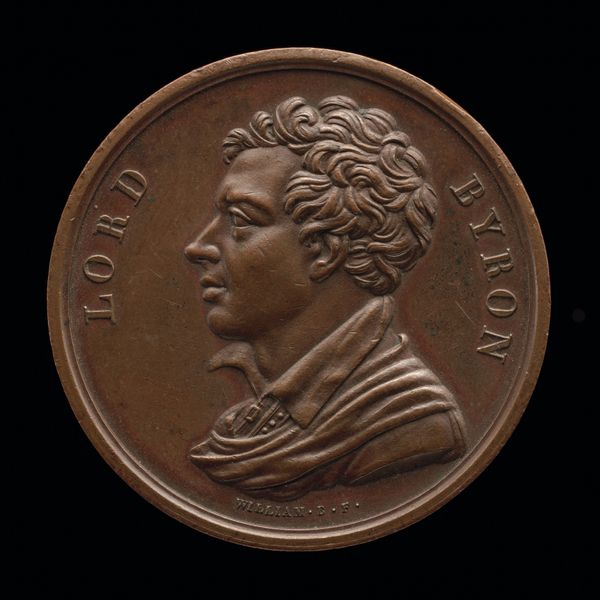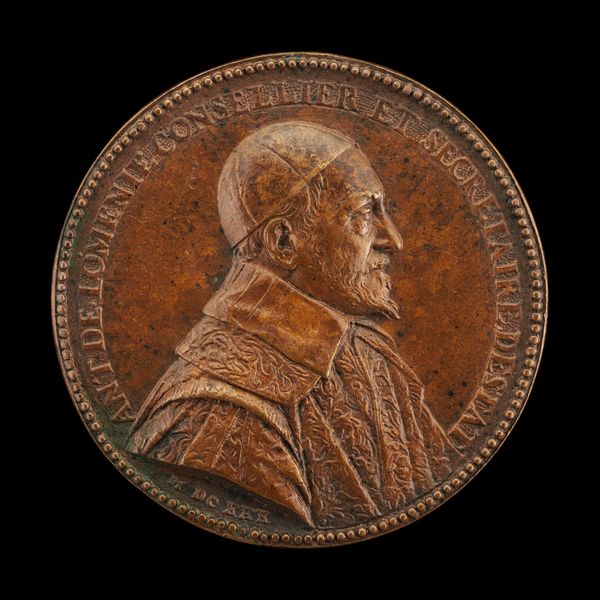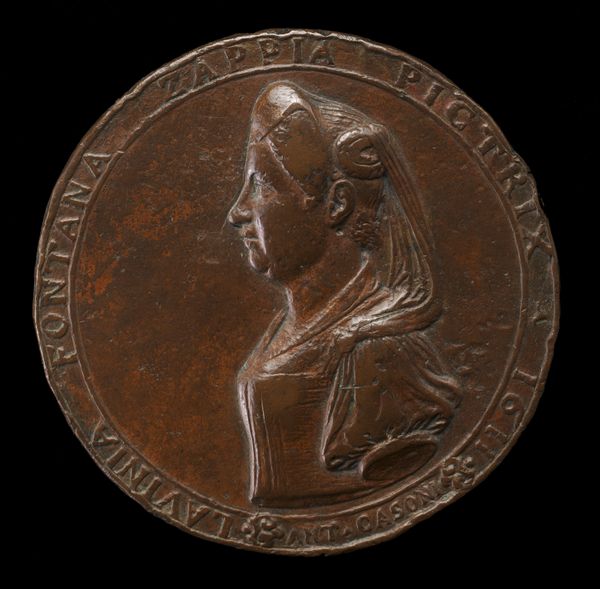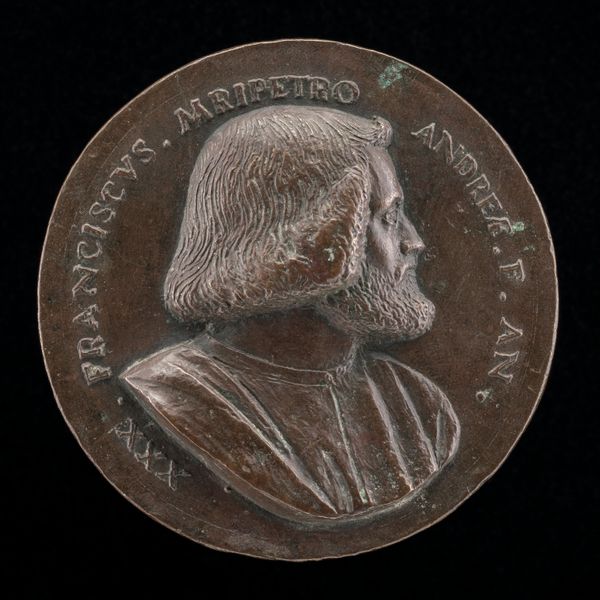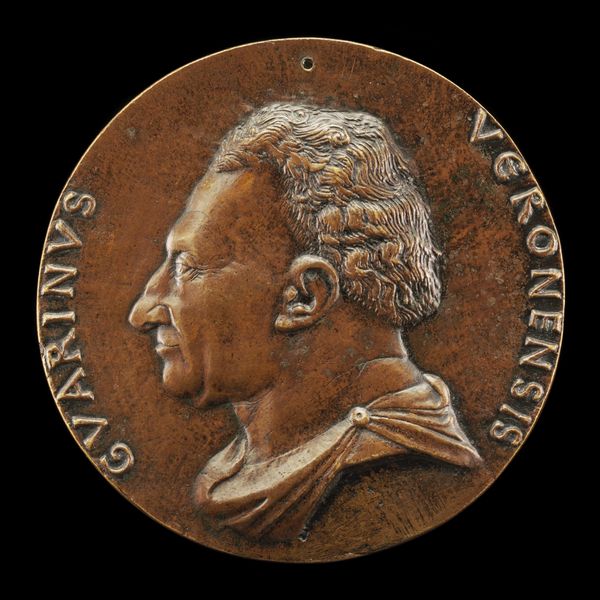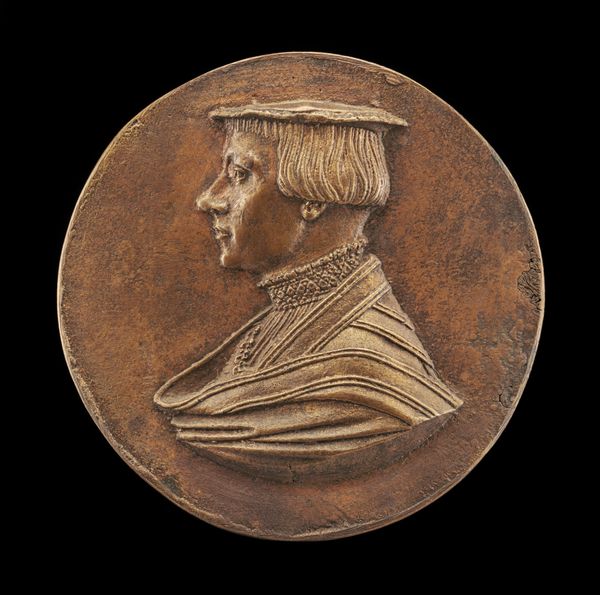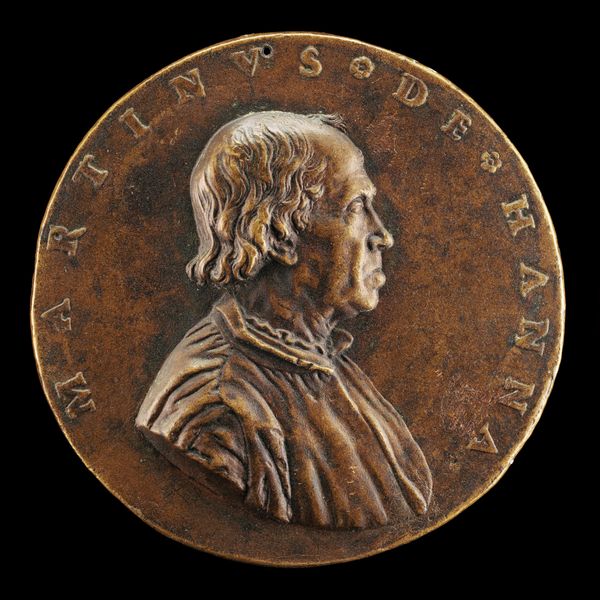![Benjamin West Medal Commemorating Those Who Subscribed to Purchase the Painting "Christ Healing the Sick in the Temple" [obverse] by George Mills](/_next/image?url=https%3A%2F%2Fd2w8kbdekdi1gv.cloudfront.net%2FeyJidWNrZXQiOiAiYXJ0ZXJhLWltYWdlcy1idWNrZXQiLCAia2V5IjogImFydHdvcmtzL2I5N2EzZGFmLTJjMGMtNDVlNC1hYmVmLTAwNTg5OGU2NTk5Ni9iOTdhM2RhZi0yYzBjLTQ1ZTQtYWJlZi0wMDU4OThlNjU5OTZfZnVsbC5qcGciLCAiZWRpdHMiOiB7InJlc2l6ZSI6IHsid2lkdGgiOiAxOTIwLCAiaGVpZ2h0IjogMTkyMCwgImZpdCI6ICJpbnNpZGUifX19&w=3840&q=75)
Benjamin West Medal Commemorating Those Who Subscribed to Purchase the Painting "Christ Healing the Sick in the Temple" [obverse] 1815
0:00
0:00
bronze, sculpture
#
portrait
#
neoclacissism
#
sculpture
#
bronze
#
sculpture
Dimensions: overall (diameter): 2.86 cm (1 1/8 in.)
Copyright: National Gallery of Art: CC0 1.0
Curator: This bronze medal, dating from 1815, features an obverse portrait created by George Mills, and was made to commemorate those who contributed to purchasing Benjamin West’s painting, “Christ Healing the Sick in the Temple”. Editor: There's a crispness and clarity to the profile that strikes me immediately. The lines are so sharp, and the color of the bronze adds a real warmth. Curator: Absolutely, Mills captures a particular aesthetic ideal characteristic of Neoclassicism. The portrait memorializes a man who shaped the Royal Academy, and implicitly upholds the standards of artistic excellence celebrated during this period of empire and moral improvement. Editor: Look how the light plays on the texture of his hair and the fabric draped over his shoulder. It's meticulously rendered, wouldn’t you say? This medallion is clearly more than a functional item. It’s intended to evoke nobility. Curator: Indeed, the very act of creating such a medal points to the deeply entrenched societal structures and power dynamics within the art world of that era. The decision to honor Benjamin West, reflects the patronage networks and institutions of power at play. We also must consider the subscribers--were they representative of the diversity within London at that time, or exclusive and elitist? Editor: I see the formal conventions clearly, drawing from classical sculpture and the taste for clean lines. There’s such a stoic sensibility to it all. And look at the strategic placement of the inscription. Curator: It all circles back to control and messaging. The commemorative medal served to legitimize artistic choices while cementing a historical narrative favorable to the British elite. It is interesting to wonder who gets a medal, who funds its making and who decides that such events warrant memorialization in art. Editor: What interests me now is the material: its form and its state today. Curator: Thinking about what the piece signified during its making gives it even more depth, in my opinion. Editor: True, though I do enjoy this encounter as well, as a way to revisit aesthetic principles in art.
Comments
No comments
Be the first to comment and join the conversation on the ultimate creative platform.


